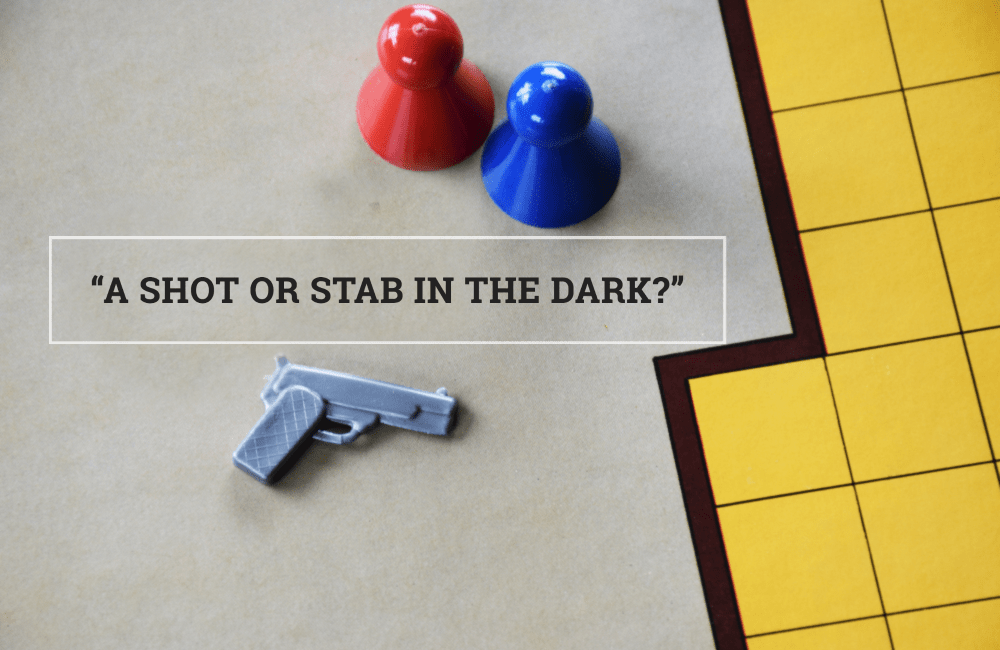
Each week here at the Australian Writers’ Centre, we dissect and discuss, contort and retort, ask and gasp at the English language and all its rules, regulations and ridiculousness. It’s a celebration of language, masquerading as a passive-aggressive whinge about words and weirdness. This week, we’re taking a shot in the dark…
Q: Hey AWC, my friend and I were trying to guess how many rooms there are in Buckingham Palace.
A: A right royal dilemma.
Q: We had no real idea, but I took a shot in the dark with 180 and she took a stab in the dark with 359. Who was correct?
A: Well you’re both way out. There are 775 rooms.
Q: First, wow. Second, no I didn’t mean that. I meant whose phrase was correct? Is a wild guess a “shot in the dark” or a “stab in the dark”?
A: Oh! Well, it’s both of course.
Q: Ugh, again? Why can’t English just make up its mind!
A: Well that’s tricky when you’re a constantly evolving language…
Q: So, is it a geography thing? Perhaps Americans use “shot” because of their Second Amendment rights?
A: Um, no.
Q: Why would you even want those heavy, furry paws anyway?
A: Sorry?
Q: It’s odd they’d want the right to bear arms. I personally think they’d be uncomfortable – I’m fine with my normal human arms.
A: You’re hilarious. Now do the 13th Amendment.
Q: I’m not your slave.
A: Anyway, there appears to be no specific American favouritism for one or the other. However, the world in general seems to use “shot in the dark” a whole lot more. It was the original.
Q: But daggers were around before guns!
A: Sure, but this phrase came along when both weapons already existed, so that’s irrelevant. In fact, the earliest appearance of “shot in the dark” in text was in 1895 – George Bernard Shaw writing in a publication called The Saturday Review. It’s likely that the “stabby” variant came after that, not before it.
Q: Fair enough.
A: In fact, “stab” was busy around this time. During the 1880s it debuted the figurative use of “stabbing someone in the back” for treacherous betrayal.
Q: Jack the Ripper wasn’t very figurative. And he was around in the 1880s.
A: Okay sure. But he stabbed women in the throat, not the back.
Q: Fair enough. Carry on.
A: Anyway, it wasn’t until 1895 (the same year Bernard Shaw was shooting in the dark) that a “stab” became synonymous with “a try” – for example, “I’ll have a stab at that”. That’s why it’s unlikely that “stab in the dark” would have been earlier.
Q: So if it’s just an innocent wild guess, why does it have to sound so murderous? Who killed the lights?
A: Well, “in the dark” in this context is to be in a state of ignorance – first used in this figurative sense in the 1670s. It’s where we later got “dark horse” from – nothing to do with colour, but instead the same “unknown” meaning of dark.
Q: Are you sure it’s not Professor Plum with the dagger, in the study?
A: Absolutely sure. But feel free to use either the dagger or revolver if you want to express a wild guess.
Q: All this reminds me of my great uncle Wyatt who used to own a bar. The power was always going out there so there were plenty of shots in the dark at that fine establishment.
A: Nice.
Q: Maybe a few stabbings too, now that I think about it…
A: Would you like to take a stab at a summary?
Q: Okay. I’m fine to use either “shot” or “stab” in the dark in my writing, although “shot” is the original version of the two. Essentially however, both mean the same thing – a wild, uninformed guess. Where no one dies.
A: That’s the upshot.
Q: I’m still shocked about Buckingham Palace having 775 rooms. You’d just get finished cleaning them and have to start again.
A: Good point.
Q: Time to shoot through?
A: Sure, let’s get well shot of this topic…
Do you have a question you’d like us to explore? Email it to us today!
About us
Contact us